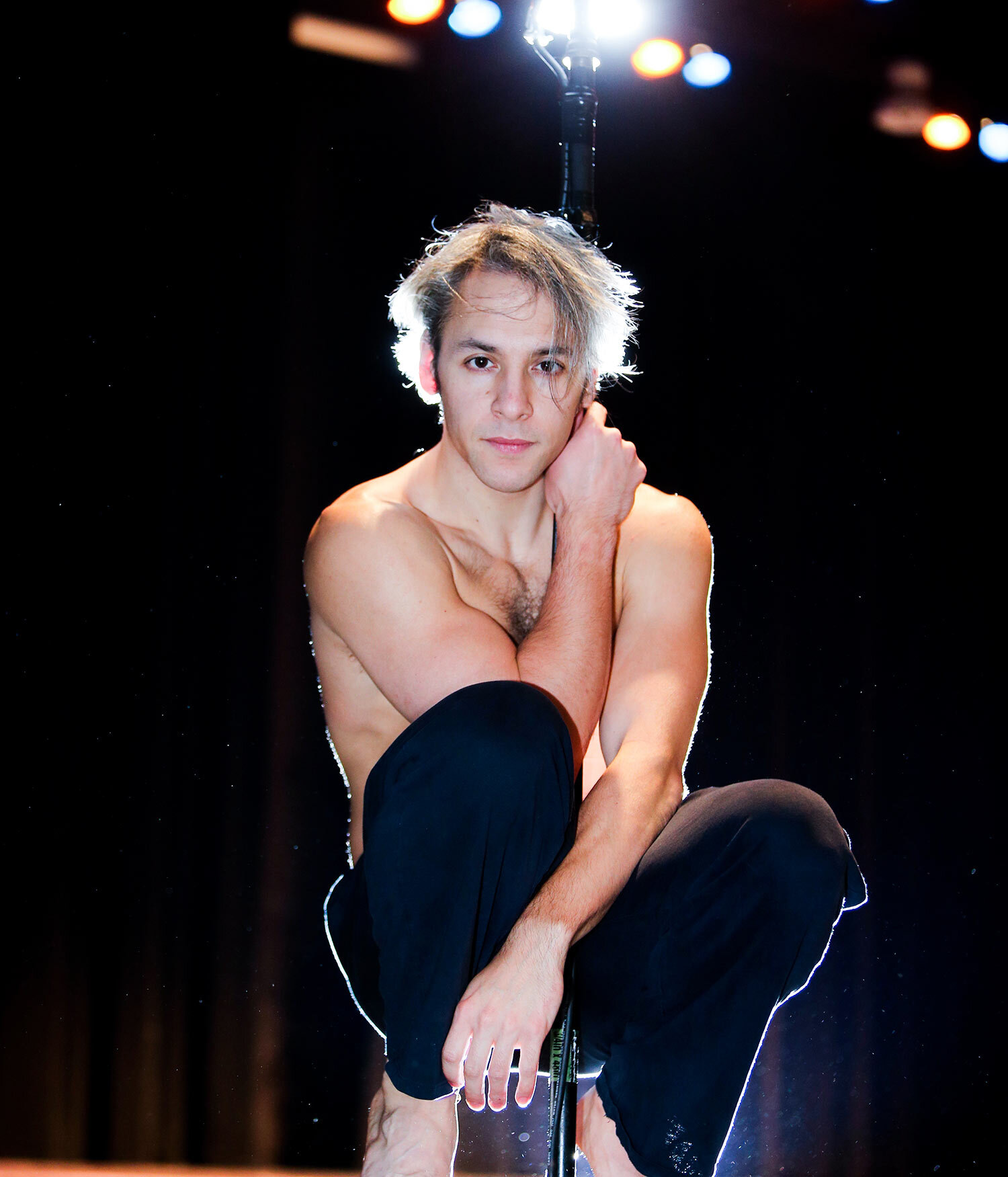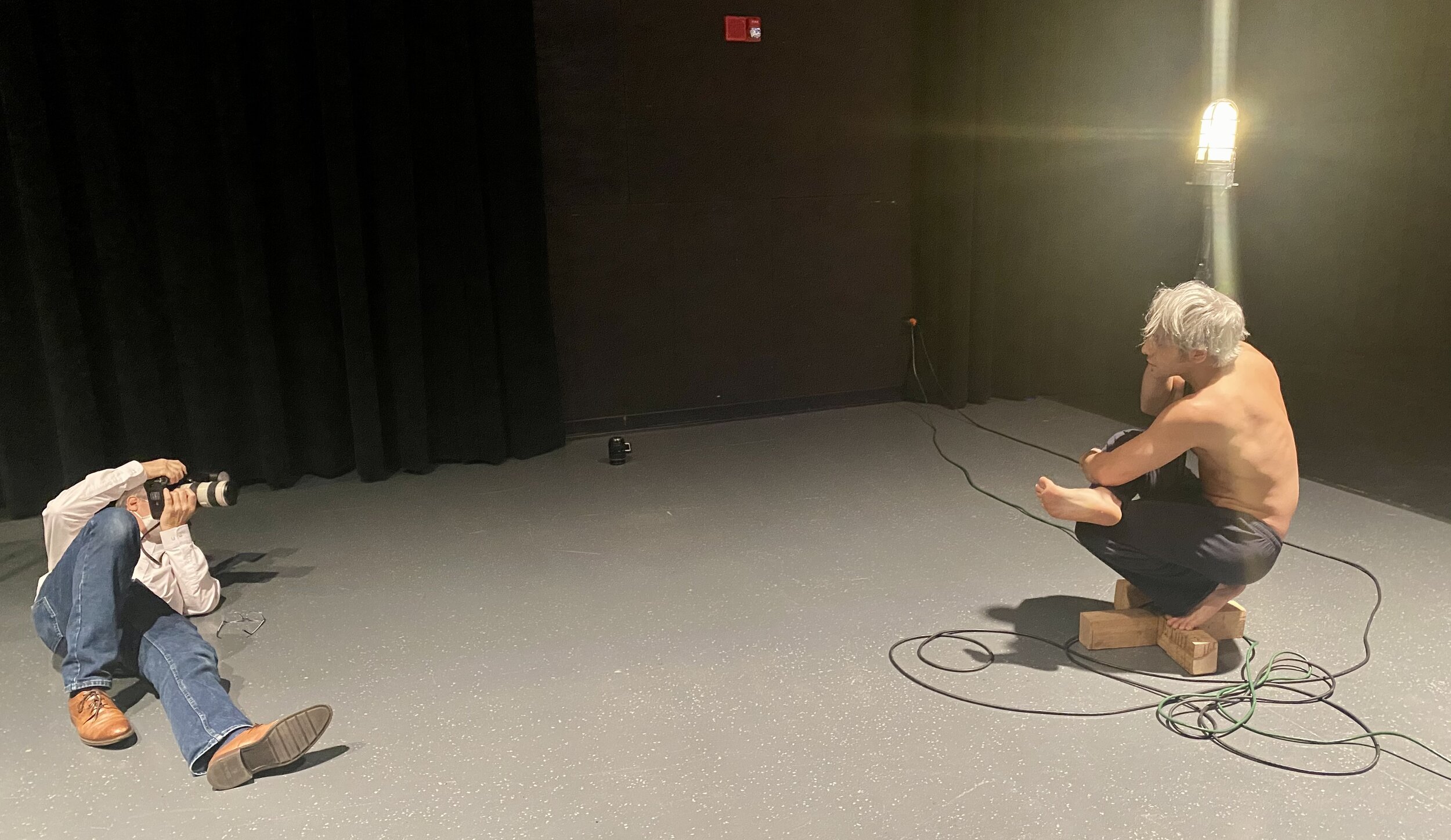Pilobolus Changes Shape Again
Quincy Ellis sits cross-legged on the rehearsal hall floor of the Warner Theater in Torrington, his attention focused on the details of a dance piece performed by two members of the Pilobolus dance company. Ellis is learning the piece, which is part of the company’s large repertoire. He’s working especially on the more difficult cantilevered moves that strike just the right lyrical balance, and for which the company is famously known.
With long, silver hair, a compact frame and a personality that brightens a room, if not a stage, Ellis, like most performing artists around the globe, has been trying to keep a sense of balance in his own life for the past year as the Covid-19 pandemic halted live indoor performances and touring. But with vaccinations increasing and a confidence building for the fall, the dancers in this Connecticut-based company based in Litchfield County are gathering again, and the troupe is preparing for its 50th anniversary season.
While Ellis is hardly the first gay male dancer in the company, he is part of another new generation of artists that is making the company even more fluid, as it further explores gender, sexuality and the many meanings of movement.
COLLEGIATE ATMOSPHERE
The company was created 50 years ago by an unlikely gang of ivy league, heterosexual jocks who had taken a dance class at Dartmouth University as a gut course. But enchanted by instructor Alison Becker Chase—whose approach emphasized muscular movement over conventional dance technique for this raw group of dance virgins—the men were enthusiastic, creative and free-spirited.
With encouraging words from established modern dance directors Alwin Nikolais and Murray Louis, the guys were inspired to continue after college to create their own band of merry movers, which happened to coincide with an explosion of dance as an artform during the 1970s. The name Pilobolus was derived from a type of phototropic fungus, and the group chose the name because it sounded interesting. Their style has always been a mash up of gymnastics, physics, leverage, balance, and a bit of dance., all choreographed as a collaboration among the troupe’s members, rather than as the vision of one creator. As the company’s style emerged, they became known for its strength, playfulness and hot-blooded sensuality: Pilobolust.
Joining the company and softening and finessing the alpha vibe were Chase and Martha Clarke, who came to teach at Dartmouth in 1972. The company thrived and became a phenomenon, creating more than 120 pieces and performing in 65 countries around the globe.
Peter Pucci, a choreographer and dancer who performed with Pilobolus throughout the ‘80s, describes the image of the company in its first decades:
“The aesthetic in the beginning was like guys, straight guys. That’s what it was. We were all giddy and it was fun and zany and athletic and as far as the creativity — explosive. The reason I got into the company in 1980 had a lot to do with its athleticism but I’m sure it also had to do because I was straight, and it had that kind of collegiate atmosphere.”
In the late ‘80s, Jim Blanc became the first out male gay dancer in the company.
“Jim had an amazing physique,” says Pucci, recalling his friend who died of …|CONTINUED|




